Abstract
Concentrations of p,p′-DDT between 0.1 and 60 μg/ml enhanced the growth rate of Heliscus submersus, and concentrations greater than 2 μg/ml had a similar effect on Tetracladium setigerum, Varicosporium elodeae, and Clavariopsis aquatica. The rate of growth of each fungus increased with increased DDT concentration.
Full text
PDF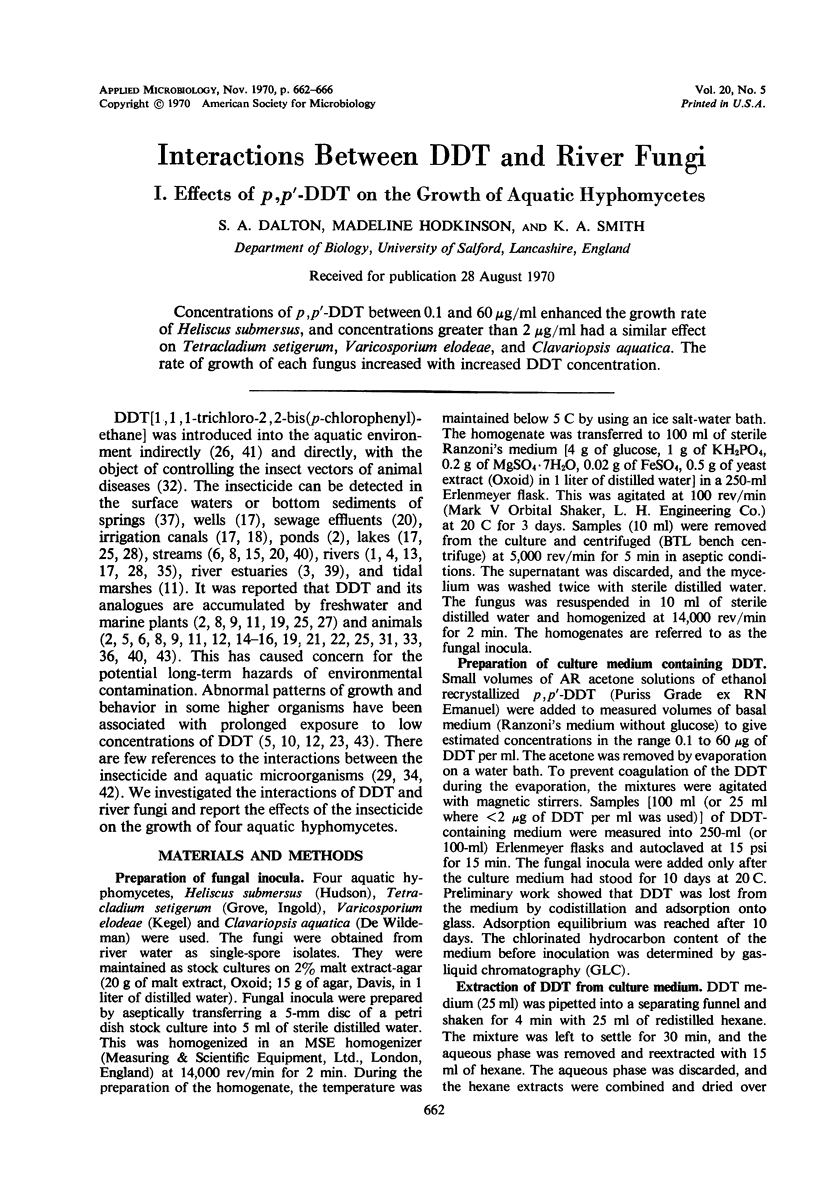
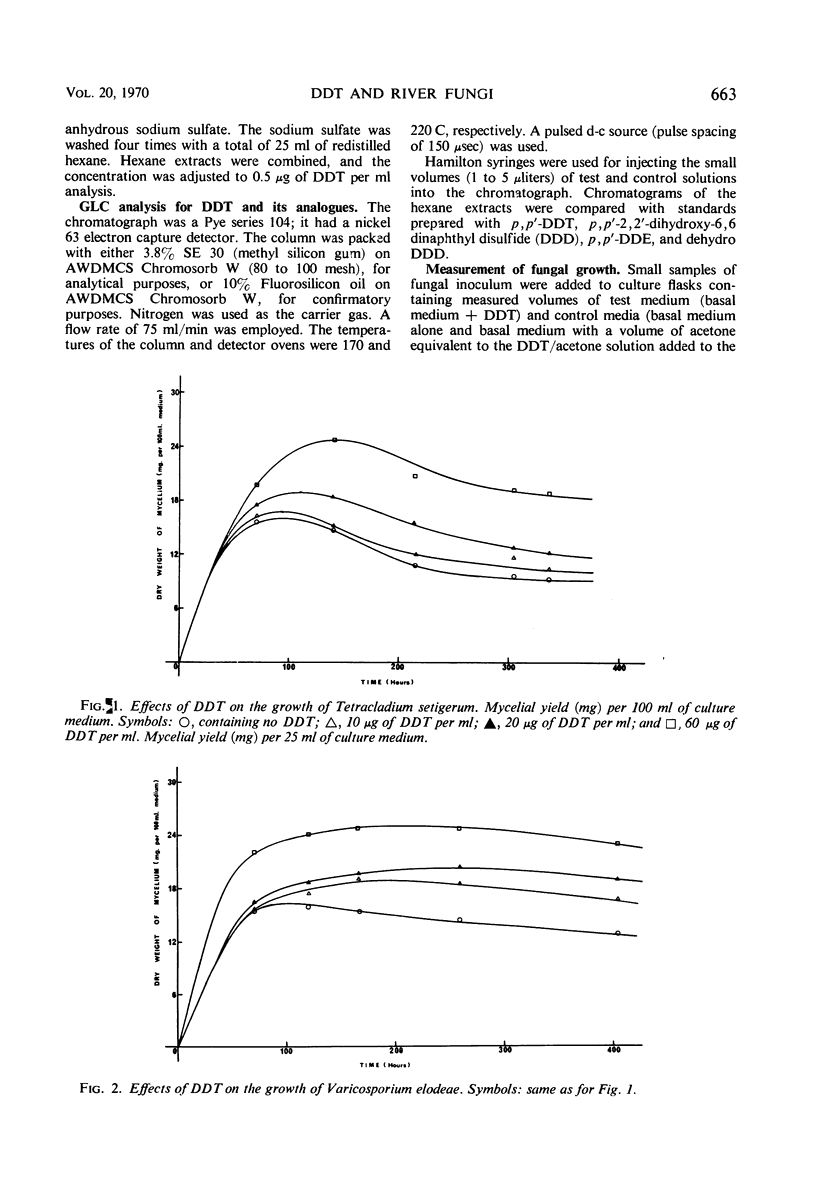
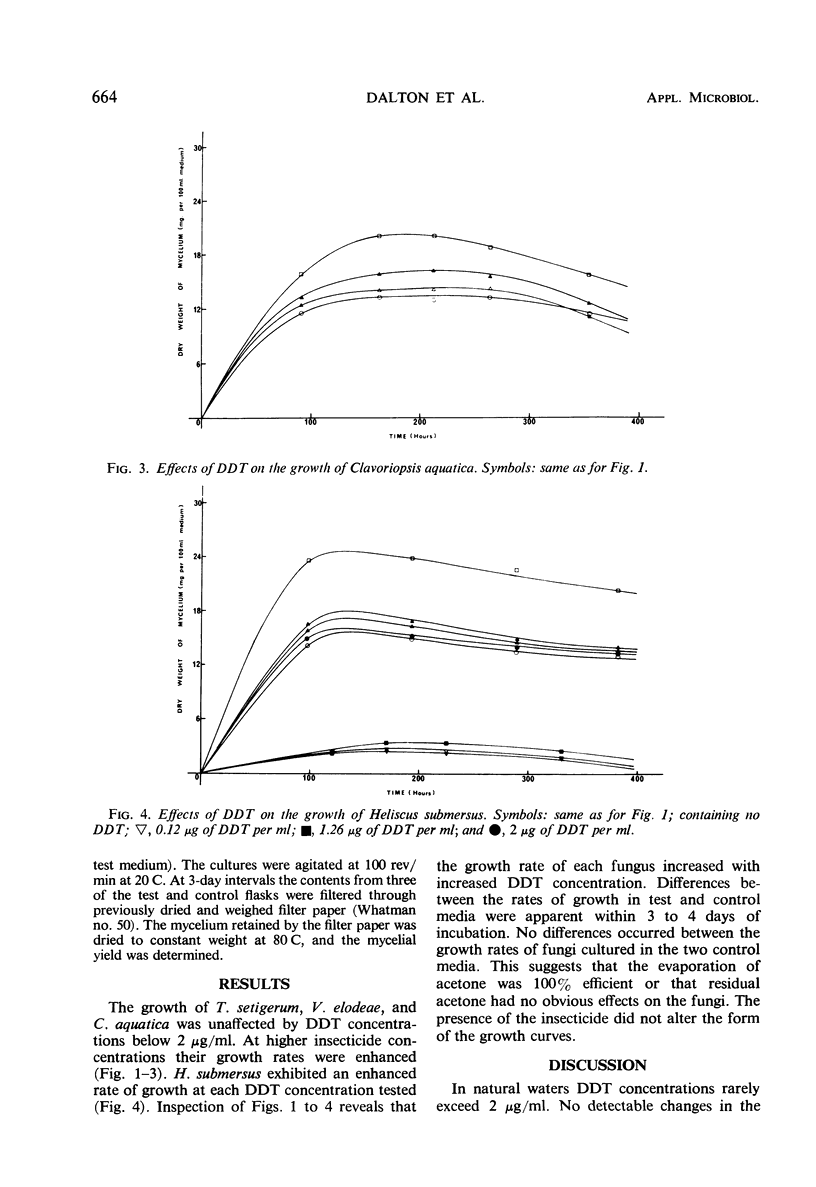
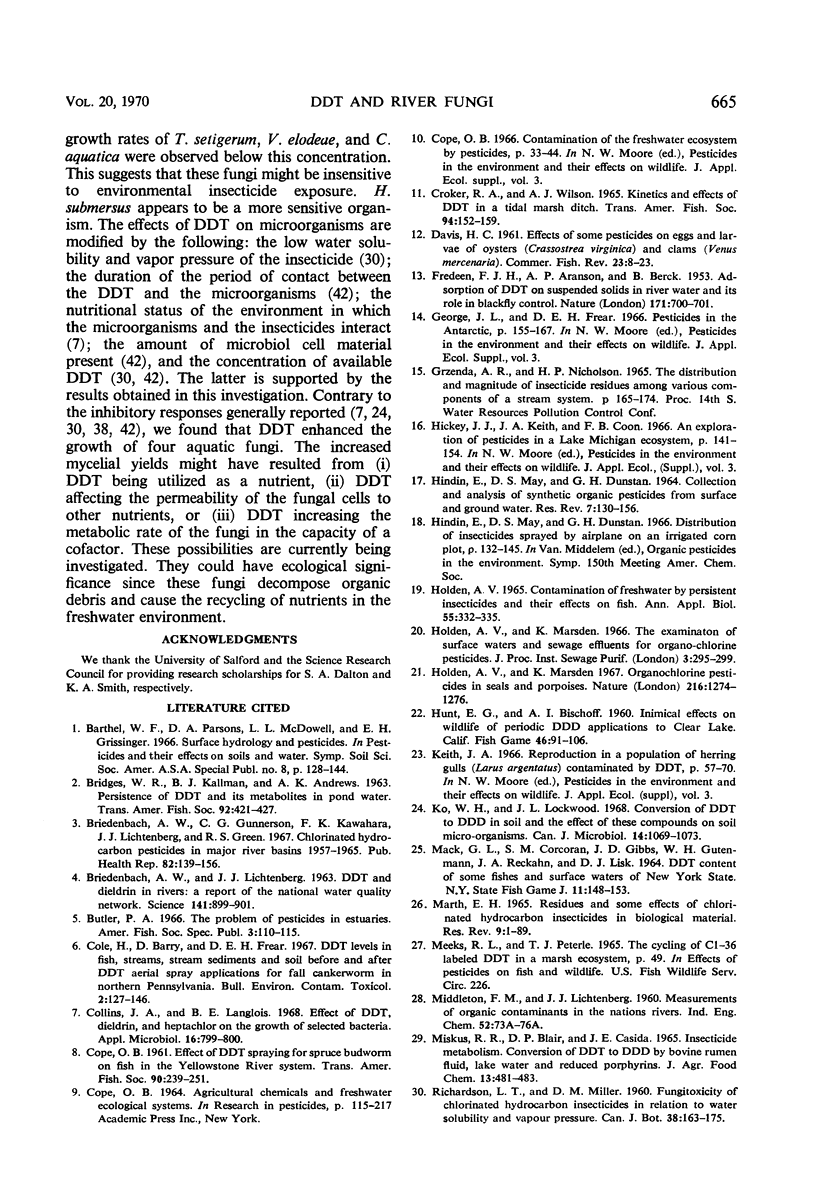
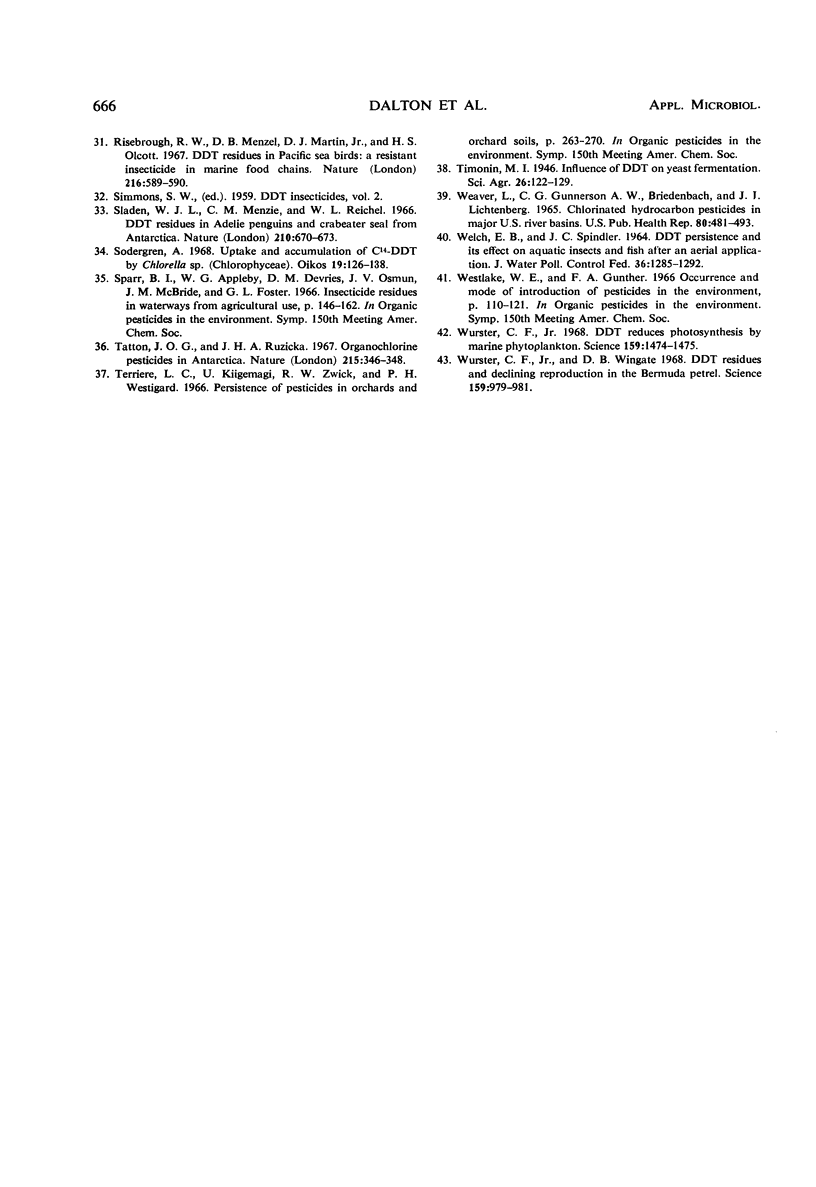
Selected References
These references are in PubMed. This may not be the complete list of references from this article.
- BREIDENBACH A. W., LICHTENBERG J. J. DDT AND DIELDRIN IN RIVERS: A REPORT OF THE NATIONAL WATER QUALITY NETWORK. Science. 1963 Sep 6;141(3584):899–901. doi: 10.1126/science.141.3584.899-a. [DOI] [PubMed] [Google Scholar]
- Breidenbach A. W., Gunnerson C. G., Kawahara F. K., Lichtenberg J. J., Green R. S. Chlorinated hydrocarbon pesticides in major river basins, 1957-65. Public Health Rep. 1967 Feb;82(2):139–156. [PMC free article] [PubMed] [Google Scholar]
- Collins J. A., Langlois B. E. Effect of DDT, dieldrin, and heptachlor on the growth of selected bacteria. Appl Microbiol. 1968 May;16(5):799–800. doi: 10.1128/am.16.5.799-800.1968. [DOI] [PMC free article] [PubMed] [Google Scholar]
- FREDEEN F. J., ARNASON A. P., BERCK B. Absorption of DDT on suspended solids in river water and its role in black-fly control. Nature. 1953 Apr 18;171(4355):700–701. doi: 10.1038/171700b0. [DOI] [PubMed] [Google Scholar]
- Hindin E., May D. S., Dunstan G. H. Collection and analysis of synthetic organic pesticides from surface and ground water. Residue Rev. 1964;7:132–156. [PubMed] [Google Scholar]
- Holden A. V., Marsden K. Organochlorine pesticides in seals and porpoises. Nature. 1967 Dec 30;216(5122):1274–1276. doi: 10.1038/2161274a0. [DOI] [PubMed] [Google Scholar]
- Ko W. H., Lockwood J. L. Conversion of DDT to DDD in soil and the effect of these compounds on soil microorganisms. Can J Microbiol. 1968 Oct;14(10):1069–1073. doi: 10.1139/m68-180. [DOI] [PubMed] [Google Scholar]
- Risebrough R. W., Menzel D. B., Martin D. J., Jr, Olcott H. S. DDT residues in Pacific sea birds: a persistent insecticide in marine food chains. Nature. 1967 Nov 11;216(5115):589–590. doi: 10.1038/216589a0. [DOI] [PubMed] [Google Scholar]
- Sladen W. J., Menzie C. M., Reichel W. L. DDT residues in Adelie penguins and a crabeater seal from Antarctica. Nature. 1966 May 14;210(5037):670–673. doi: 10.1038/210670a0. [DOI] [PubMed] [Google Scholar]
- Tatton J. O., Ruzicka J. H. Organochlorine pestidices in Antarctica. Nature. 1967 Jul 22;215(5099):346–348. doi: 10.1038/215346a0. [DOI] [PubMed] [Google Scholar]
- WEAVER L., GUNNERSON C. G., BREIDENBACH A. W., LICHTENBERG J. J. CHLORINATED HYDROCARBON PESTICIDES IN MAJOR U.S. RIVER BASINS. Public Health Rep. 1965 Jun;80:481–493. [PMC free article] [PubMed] [Google Scholar]
- Wurster C. F., Jr DDT reduces photosynthesis by marine phytoplankton. Science. 1968 Mar 29;159(3822):1474–1475. doi: 10.1126/science.159.3822.1474. [DOI] [PubMed] [Google Scholar]
- Wurster C. F., Jr, Wingate D. B. DDT residues and declining reproduction in the Bermuda petrel. Science. 1968 Mar 1;159(3818):979–981. doi: 10.1126/science.159.3818.979. [DOI] [PubMed] [Google Scholar]


